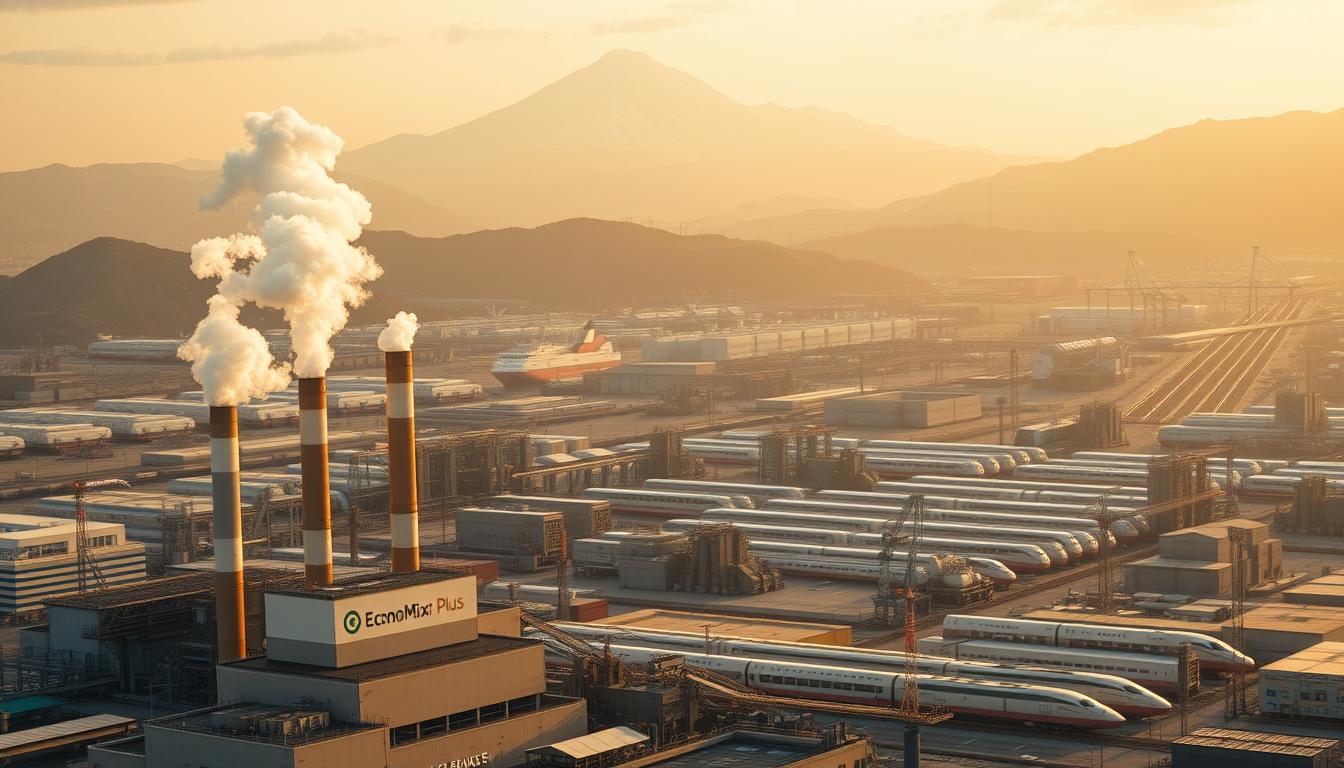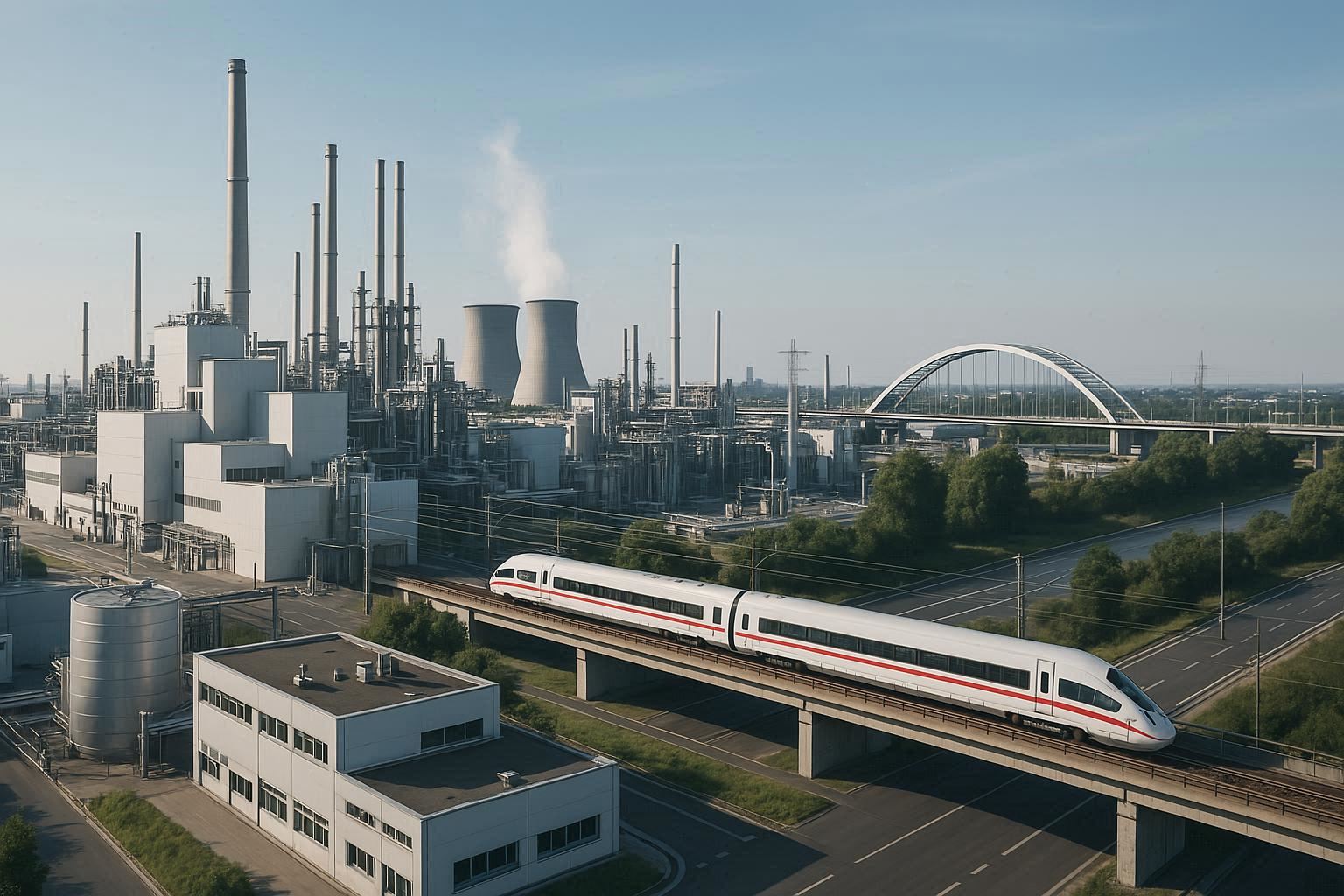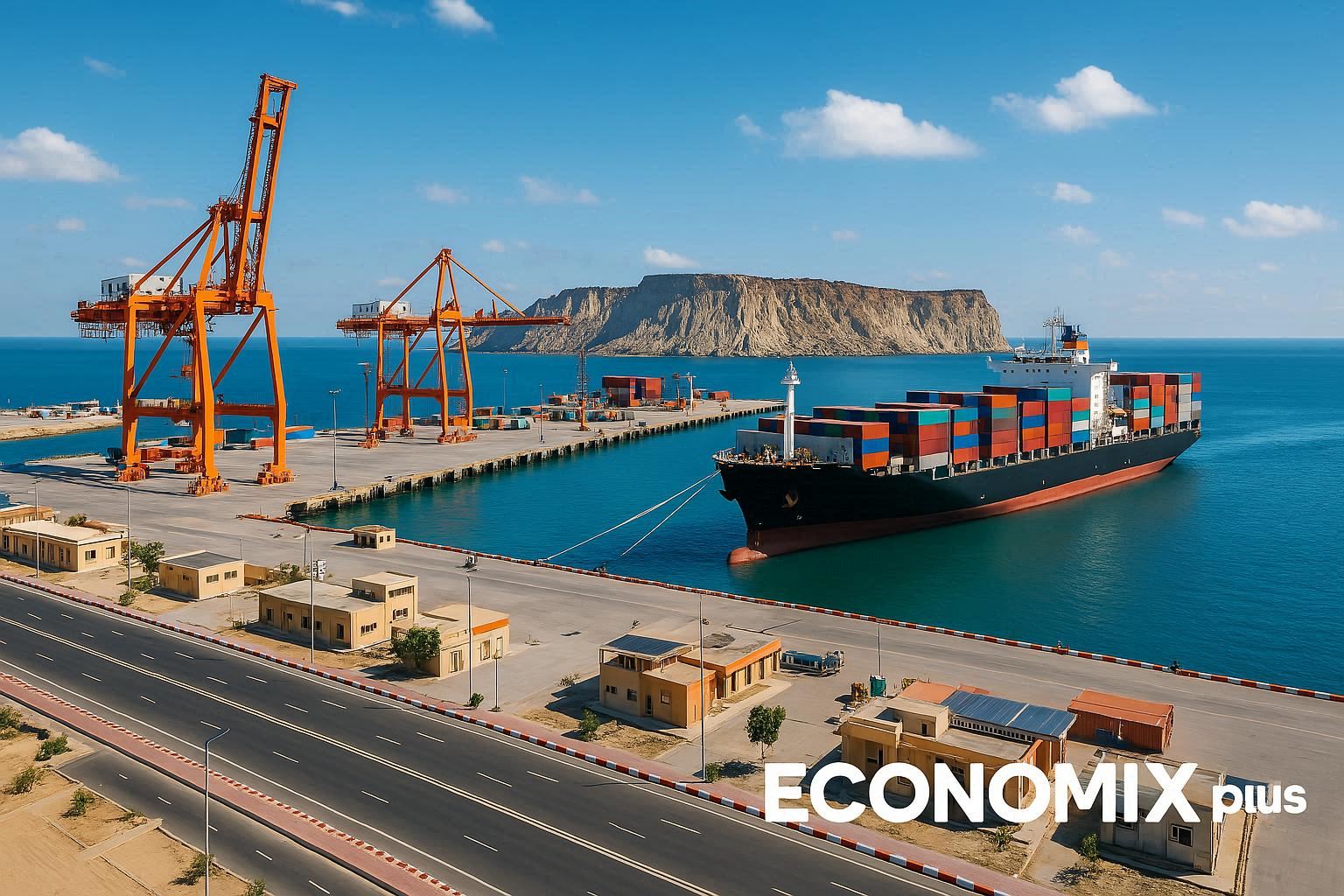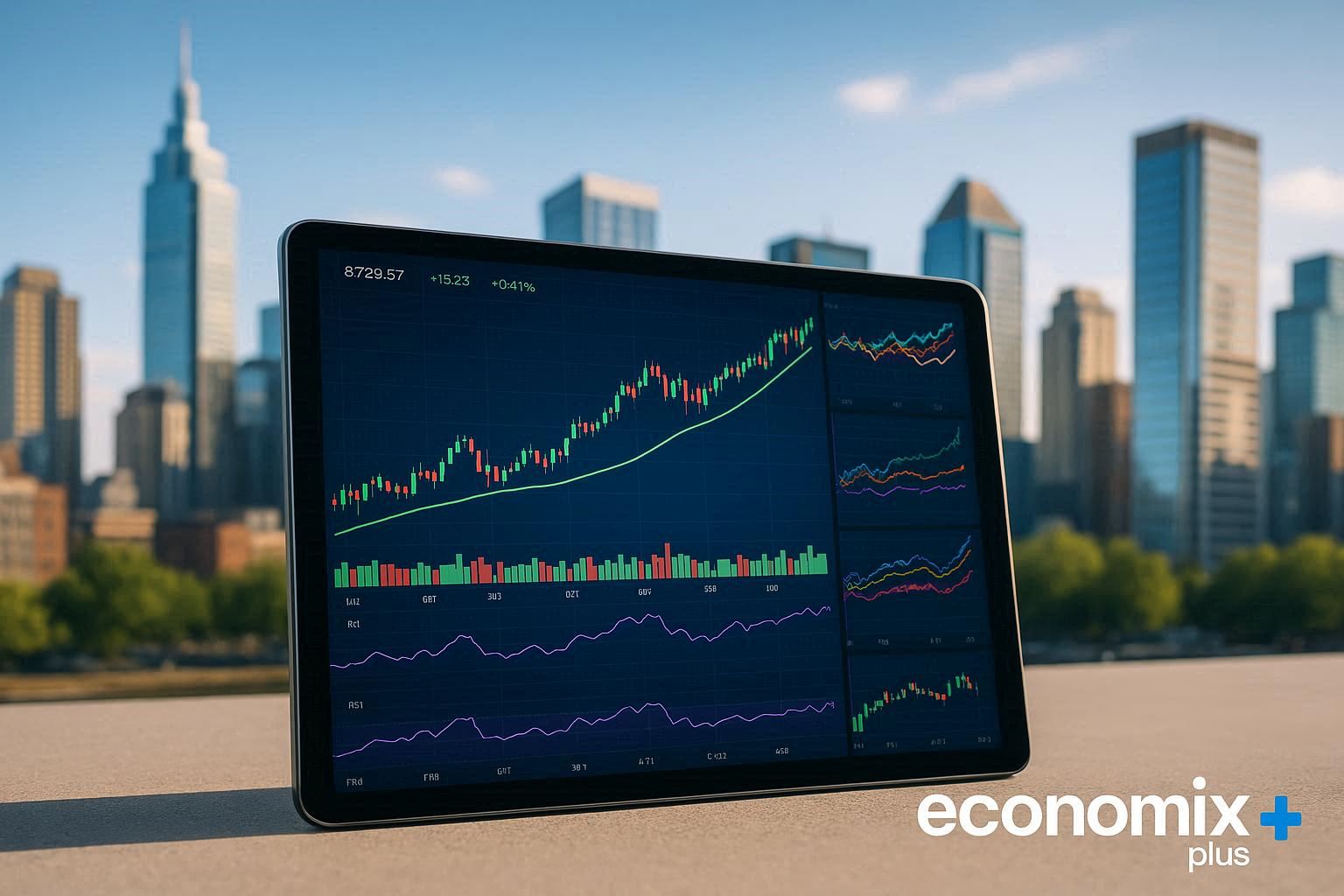Few nations have rewritten economic rules as boldly as this island country. With nearly 90% of its land unsuitable for farming and almost no domestic oil reserves, how did it rise to dominate industries like automotive manufacturing and consumer electronics?
The answer lies in strategic reinvention after World War II. Facing extreme resource shortages, the nation shifted focus to high-value manufacturing. Government-led initiatives prioritized technological research while fostering partnerships between corporations and financial institutions.
This approach transformed import dependence into an advantage. By refining foreign raw materials into precision-engineered exports, the country built trade surpluses that fueled further growth. Today, it maintains the world’s fourth-largest economy through continuous innovation in robotics, energy efficiency, and production methods.
Key Takeaways
- Postwar government strategies prioritized technology over raw material extraction
- Export-focused policies turned resource limitations into manufacturing strengths
- Strategic imports of oil and metals supported advanced production systems
- Automotive and electronics sectors became global benchmarks for quality
- Ongoing investment in R&D maintains competitive edge across industries
From fishing villages to factory robots, the nation’s journey proves that human ingenuity can outweigh geographical constraints. Its ability to adapt trade networks and production processes continues to redefine modern industrial power.
Introduction: Japan’s Industrial Landscape
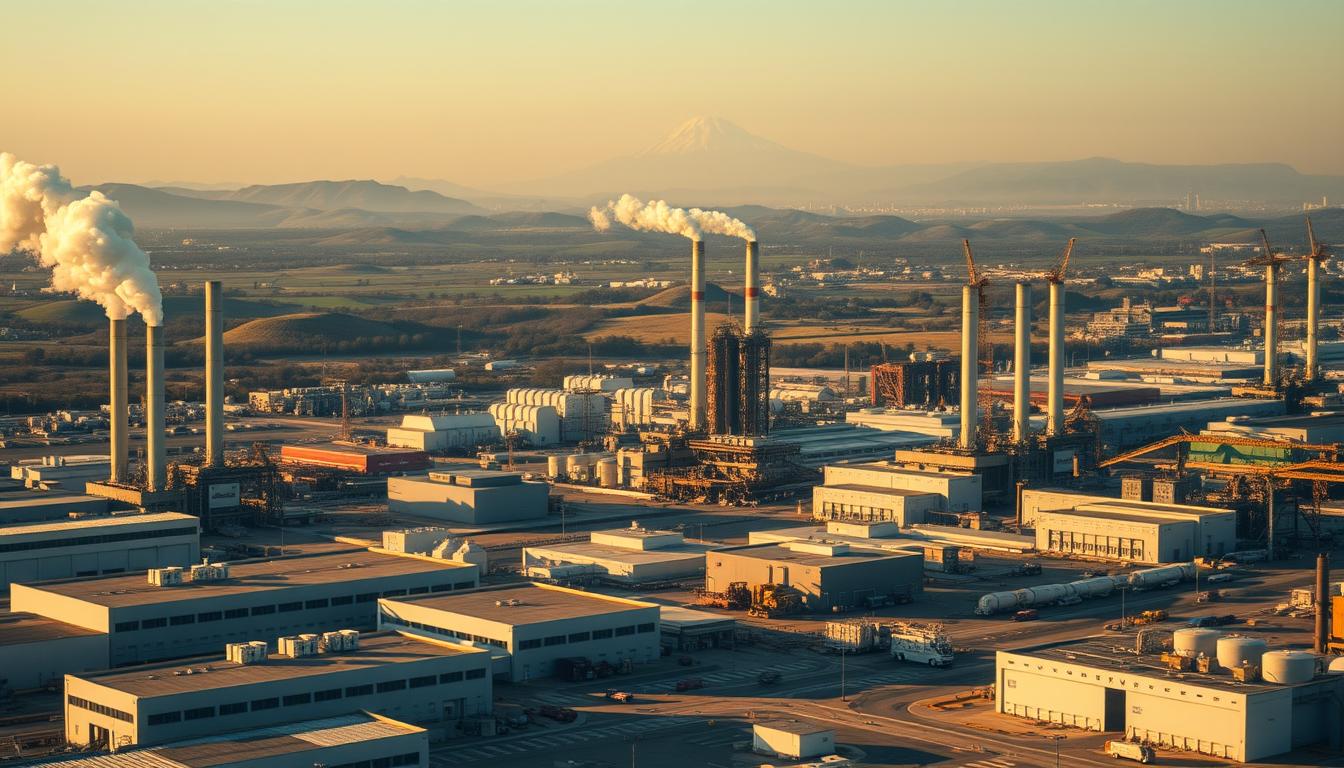
A nation spanning 145,000 square miles—smaller than California—houses the world’s fourth-largest economy. With 125 million people in a mountainous area, space constraints forced industries to prioritize efficiency over expansion. Nearly 75% of its land remains unsuitable for large-scale production, creating a unique economic blueprint.
The country’s mixed economy blends advanced manufacturing with robust service sectors. Automotive giants and electronics innovators coexist with financial hubs and tourism networks. This diversity fuels trade surpluses exceeding $40 billion annually, compensating for minimal domestic oil or rare metal reserves.
Demographic pressures shape industrial strategies. High population density in cities like Tokyo and Osaka drives demand for compact technologies and streamlined logistics. “Our greatest resource is human capital,” noted a former trade minister, emphasizing workforce education and technical training.
Government initiatives like the 1955 Income Doubling Plan laid foundations for sustained growth. Today, public-private partnerships allocate 3.5% of GDP to research—double the global average. Strategic imports of raw materials feed precision production systems, transforming foreign resources into high-margin exports.
This framework of scarcity-driven innovation sets the stage for examining technological breakthroughs and global market strategies. Limited natural assets didn’t hinder progress—they redefined it.
Postwar Economic Revival and Industrial Expansion
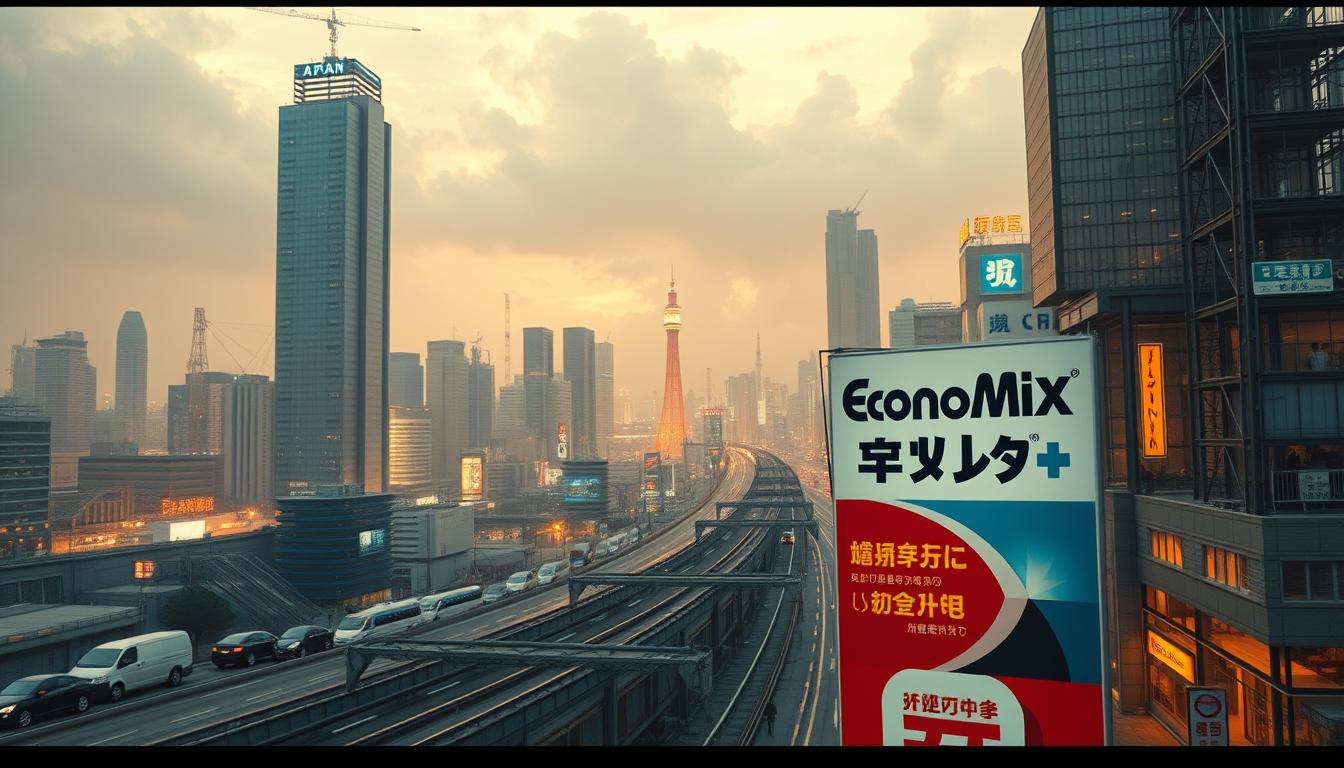
Emerging from the ashes of conflict, a strategic blueprint propelled unprecedented industrial growth. The government implemented strict fiscal reforms under Joseph Dodge, stabilizing currency and curbing inflation. This “Dodge Line” policy redirected resources toward export-oriented manufacturing, laying groundwork for future expansion.
Reconstruction and the Role of Trade
External demand became the engine of recovery. When the Korean War erupted, U.S. military procurement orders surged—reaching $3.5 billion between 1950-1953. Factories pivoted to supply trucks, steel, and machinery, reviving dormant production lines.
Administrative guidance streamlined business decisions, prioritizing heavy industries like shipbuilding and chemicals. By 1960, exports tripled compared to prewar levels. Trade surpluses funded technology imports, creating a cycle of innovation and reinvestment.
The Lost Decade and Subsequent Recovery
Asset price collapses in 1991 triggered a prolonged economic slump. GDP growth averaged 1% annually through the 1990s. Workforce demographics shifted as aging populations strained traditional employment models.
Recovery began through structural reforms. The government reallocated subsidies to robotics and renewable energy sectors. Exports rebounded by 2003, driven by high-value products like hybrid vehicles and advanced semiconductors. This adaptability reaffirmed the country’s role in global supply chains.
Technological Innovations Driving Manufacturing Excellence
Robotic arms weld chassis frames with micron-level precision while autonomous guided vehicles shuttle components between workstations. This relentless pursuit of technical mastery defines modern manufacturing in the island nation. Corporations transformed scarcity into opportunity through three strategic pillars: automation, material efficiency, and workforce upskilling.
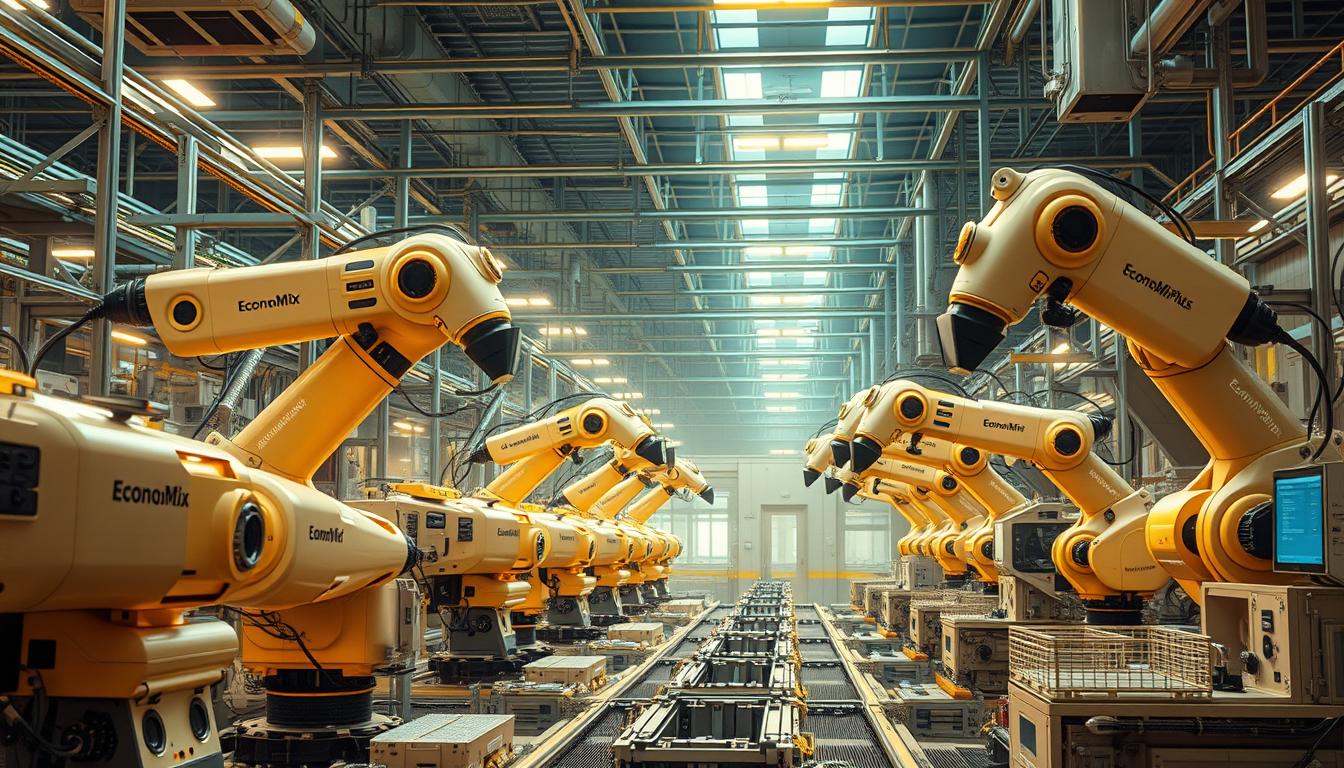
Smart Factories Reshape Production
Automation began revolutionizing production processes in the 1970s. Toyota’s lean manufacturing system reduced waste by 40% using just-in-time parts delivery. Today, Fanuc’s industrial robots achieve 0.02mm repeatability—thinner than a human hair. These advancements enabled factories to maximize output from limited raw materials.
Electronics and Automotive Breakthroughs
Sony’s transistor radios in the 1950s demonstrated how miniaturization creates high-value products. By the 1980s, 60% of global semiconductor manufacturing occurred domestically. Hybrid vehicle pioneers like Honda cut energy use per car by 35% through advanced power management systems.
Government-funded R&D hubs accelerated growth across key industries. The Ministry of Economy allocated $2 billion annually for robotics research since 2015. Public-private partnerships developed heat-resistant alloys that reduced oil consumption in steel mills by 18%.
This technological edge sustains trade leadership despite resource constraints. Automated quality control systems help maintain a 99.98% defect-free rate for precision equipment exports. As global demand shifts toward sustainable solutions, these innovations position the country at the forefront of next-generation manufacturing.
Government Intervention and Long-Term Strategic Policies
Distinctive policymaking transformed resource scarcity into global competitiveness. The Economic Planning Agency pioneered a collaborative model, hosting 200+ annual meetings between ministries and corporate leaders. This dialogue-driven approach shaped five-year economic blueprints that aligned private-sector goals with national priorities.
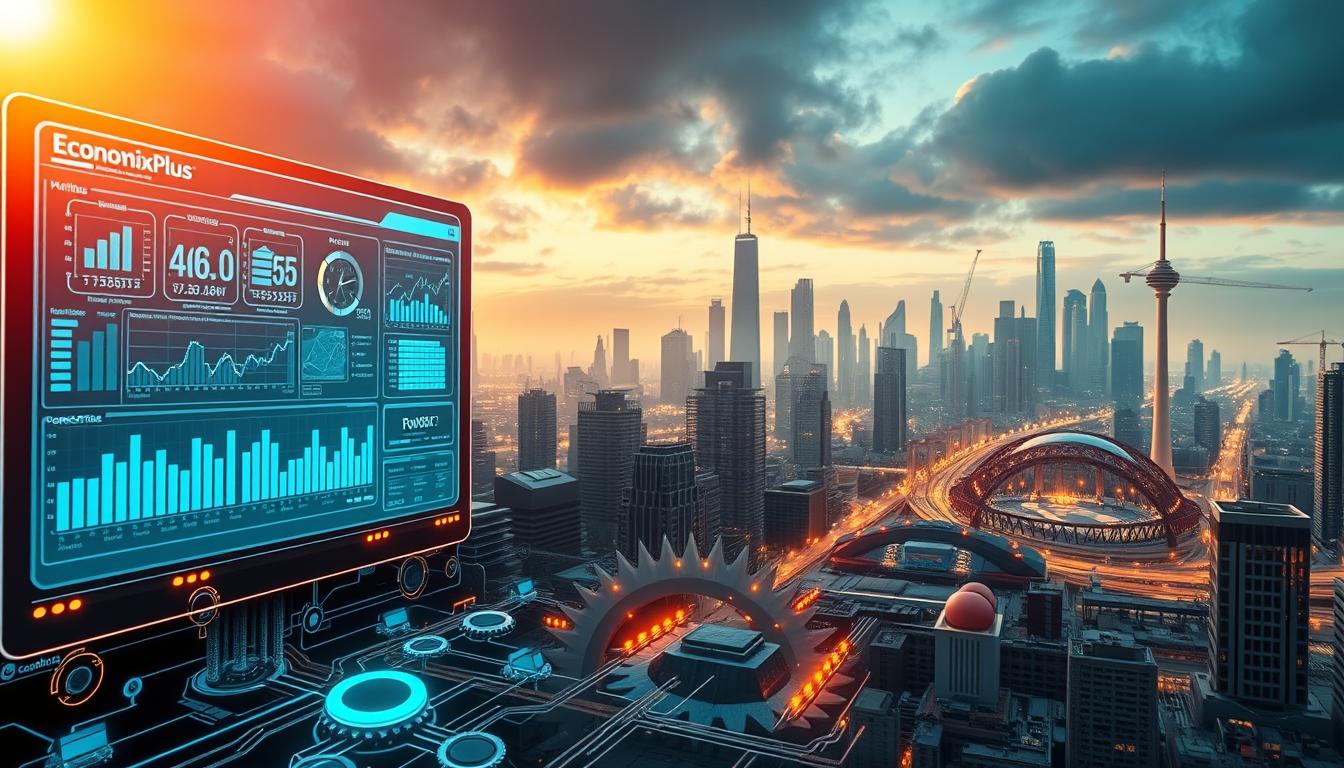
Administrative Guidance in Action
Rather than rigid regulations, officials used gentle persuasion to steer industries. When steel consumption peaked in the 1980s, targeted tax incentives shifted focus to robotics and microelectronics. A former MITI director noted:
“We map trends, not dictate outputs—like gardeners pruning for optimal growth.”
Deregulation Sparks Innovation
The 1987 Japan Railways privatization cut operating costs by 30% while improving service frequency. Similar reforms in telecommunications and energy sectors attracted $12 billion in foreign investment within three years. Public-private partnerships now drive 45% of renewable energy projects nationwide.
| Policy | Implementation | Economic Impact |
|---|---|---|
| Agricultural Modernization | Precision farming subsidies | 68% yield increase (1990-2020) |
| Industrial Rebalancing | Robotics R&D grants | #1 in automation patents since 2005 |
| Trade Optimization | Export corridor development | 15% faster customs clearance |
These adaptive strategies maintain the country’s position as the world’s third-largest exporter. By continually reallocating resources between sectors—like shifting textile production capacity to medical equipment—the economy evolves without radical overhauls. Market-focused governance proves that strategic planning can coexist with corporate dynamism.
Trade Policies and Export-Driven Growth
Global markets became the lifeline for a nation with minimal raw materials. By channeling expertise into high-margin exports, this island economy transformed resource dependency into a $40 billion annual trade surplus. Precision automobiles and cutting-edge electronics now dominate overseas markets, accounting for 60% of total export revenue.
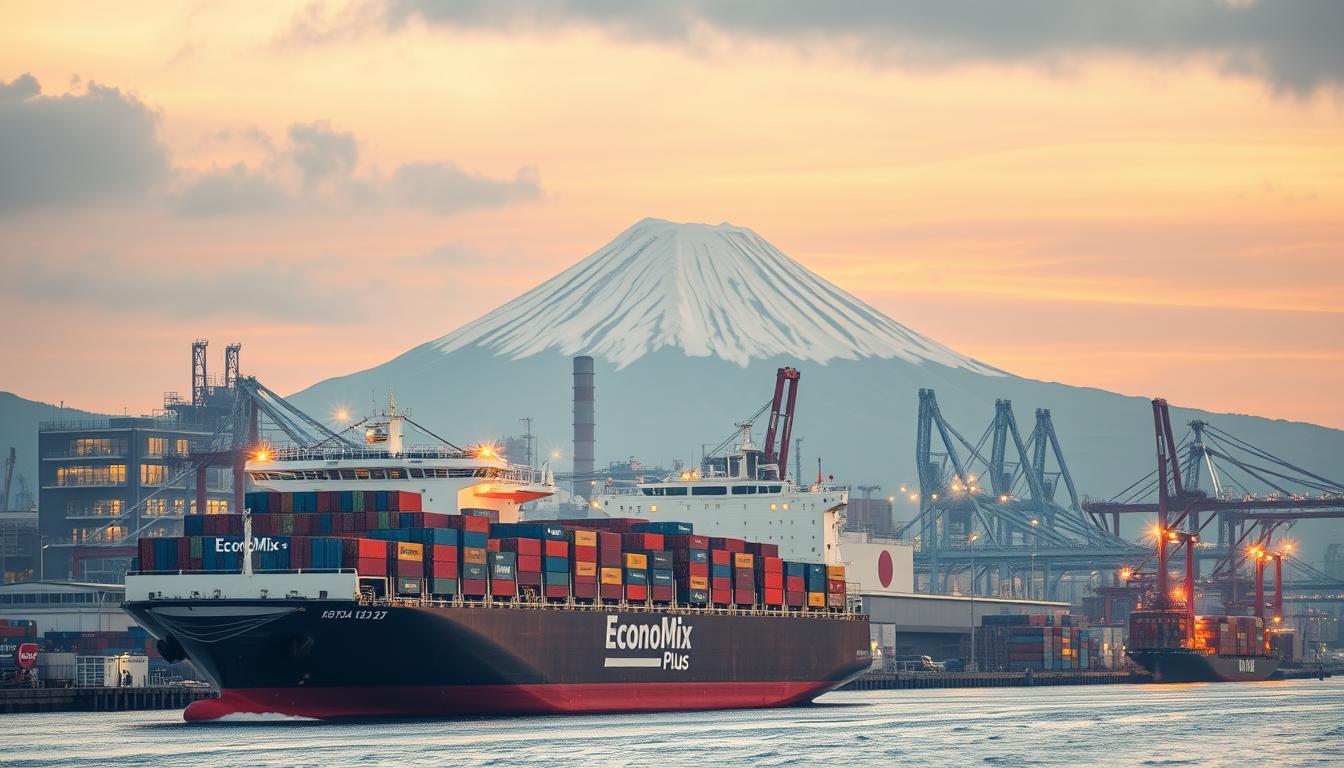
Global Market Integration
The United States emerged as a critical partner, absorbing 20% of exported goods during peak growth periods. Trade agreements like the 1986 Market-Oriented Sector-Selective talks dismantled barriers for electronics and auto parts. A former trade negotiator emphasized:
“Our factories don’t just make products—they craft entry points into foreign economies.”
By 2020, 78% of manufacturing firms operated cross-border supply networks. Southeast Asian hubs now handle 45% of component production, reducing reliance on domestic raw materials.
Overseas Production and Strategic Alliances
Shifting assembly plants abroad cut material import costs by 30% between 1995-2015. Key partnerships include:
| Region | Focus | Output Share |
|---|---|---|
| North America | Vehicle Assembly | 38% |
| ASEAN | Electronics Components | 52% |
| European Union | Luxury Vehicles | 27% |
Government initiatives like the Japan External Trade Organization funded 12,000 business expansions overseas since 2000. Recent analyses by EconomixPlus highlight how these economic strategies balance domestic innovation with global operational footprints.
Persistent trade surpluses—averaging $18.6 billion monthly in 2023—underscore the effectiveness of export-centric models. As digital trade platforms expand, the country’s ability to adapt tariff structures ensures continued relevance in evolving markets.
Sectoral Analysis: Manufacturing, Services, and Beyond
A delicate balance defines the island nation’s economic engine. Manufacturing accounts for 20% of GDP, while services dominate at 73%. Automotive and electronics remain pillars, generating 35% of total export revenue.
Drivers of Economic Output
The automotive industry produces 8 million vehicles annually, securing its position as the world’s third-largest car exporter. Electronics giants control 15% of global semiconductor sales, with precision components powering everything from smartphones to medical devices.
| Sector | Workforce Share | Export Contribution |
|---|---|---|
| Automotive | 5.2% | ¥45 trillion |
| Electronics | 7.1% | ¥32 trillion |
| Services | 68% | ¥88 trillion |
Service sectors now employ three-quarters of workers, fueled by fintech and healthcare innovations. However, manufacturing maintains higher productivity—output per worker is 23% above the national average.
Demographic shifts pose challenges. Over 28% of factory workers will reach retirement age by 2030. Competitors like South Korea and China capture 12% more electronics market share annually through cost advantages.
Yet the country retains leadership in quality metrics. Its factories produce 40% fewer defective units than global peers. This precision-first approach compensates for higher material costs, securing premium pricing in luxury vehicles and robotics.
The Economic Impact of Limited Natural Resources
Scarcity shapes nations differently—some collapse, others innovate. With only 12% arable land and near-zero domestic fossil fuel reserves, this island nation turned dependency into strategic advantage. Its resource management model balances global trade partnerships with domestic efficiency breakthroughs.
Import Dependence and Resource Scarcity
Over 90% of energy needs come from overseas—primarily oil from the Middle East. Critical minerals like cobalt and rare earths see 98% import rates. Even limestone, a construction staple, sees 30% foreign sourcing despite domestic quarries producing 160 million tons annually.
The country’s economic strategies prioritize securing stable supply chains. Strategic reserves stockpile six months’ worth of crude oil. Trade agreements ensure uninterrupted access to Australian iron ore and Chilean copper.
Adaptations in Key Industries
Agriculture thrives through vertical farming and hydroponics, boosting rice yields by 25% since 2000. Coastal fisheries employ satellite tracking to protect stocks while supplying 15% of global seafood. Fish farms now produce 80% of domestic salmon.
Three innovations sustain industrial output:
- Robotic sorting in mining increases rare metal recovery by 18%
- Desalination plants reuse 90% of industrial water
- AI-powered crop monitoring cuts fertilizer waste by 40%
These adaptations enable 60% food self-sufficiency for a population of 125 million. By transforming limitations into efficiency benchmarks, the nation maintains its position as a top-five global exporter.
What makes Japan an industrial leader despite its limited natural resources
Resource scarcity often spells doom, but for one nation, it became a blueprint. Decades of targeted policies and inventive problem-solving turned geographical constraints into global competitiveness. This approach reshaped entire industries while maintaining economic stability through turbulent eras.
Innovation as a Catalyst for Growth
The government accelerated progress through collaborative R&D frameworks. Since 1955, public funding for robotics and energy efficiency surged by 400%, creating breakthroughs like hydrogen fuel cells and automated assembly lines. A postwar industrialization strategy prioritized quality over quantity, transforming imported raw materials into premium exports.
| Initiative | Investment | Outcome |
|---|---|---|
| Automation Grants | $4.2B (2010-2020) | 38% productivity boost |
| Renewable Energy | $12B annual | 24% energy import reduction |
| Semiconductor Research | 8% of GDP | #2 global market share |
Resilience Amid Resource Constraints
After World War II, the country rebuilt its economy by reimagining supply chains. Strategic alliances with the United States and Southeast Asia secured critical resources like rare earth metals. Factories adopted circular manufacturing models, recycling 92% of industrial waste by 2022.
Three pillars sustain leadership:
- Continuous workforce training programs
- Export-focused trade agreements
- Adaptive energy policies
This framework proves that visionary planning and technical ingenuity can overcome even the most daunting limitations. By treating scarcity as a design challenge rather than a barrier, Japan maintains its role as a global industrial benchmark.
Conclusion
Transforming challenges into competitive advantages defines this island nation’s economic journey. Through relentless innovation and strategic planning, it achieved global leadership in automotive and electronics sectors despite importing 90% of its energy needs. Postwar policies laid the groundwork, while modern robotics and circular manufacturing sustain growth.
The country’s $4.9 trillion GDP reflects decades of adaptive trade strategies. Export corridors deliver precision machinery to 190 nations, generating consistent surpluses. Vertical farming and hydrogen energy projects showcase how resource limitations spark efficiency breakthroughs.
Three pillars maintain its industrial edge:
- Government-business collaboration driving R&D investments
- Workforce expertise in high-value production
- Dynamic trade networks securing critical materials
From postwar revival to one world’s most automated factories, the nation proves geographical constraints can’t stifle progress. Its ability to reinvent systems—from energy grids to export policies—keeps industries at peak performance levels. As global markets evolve, this approach ensures continued relevance in an interconnected economy.
